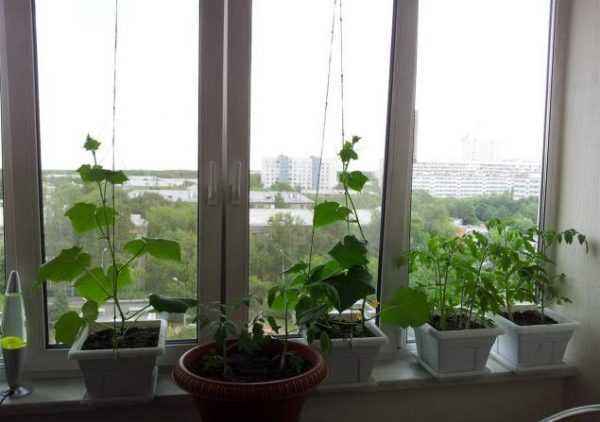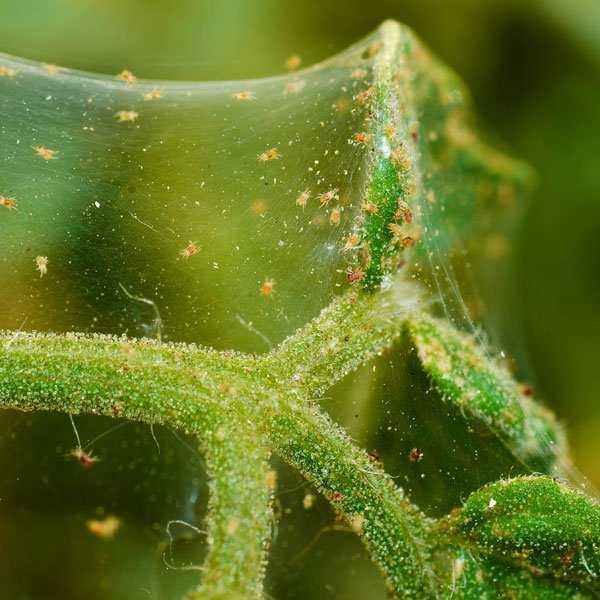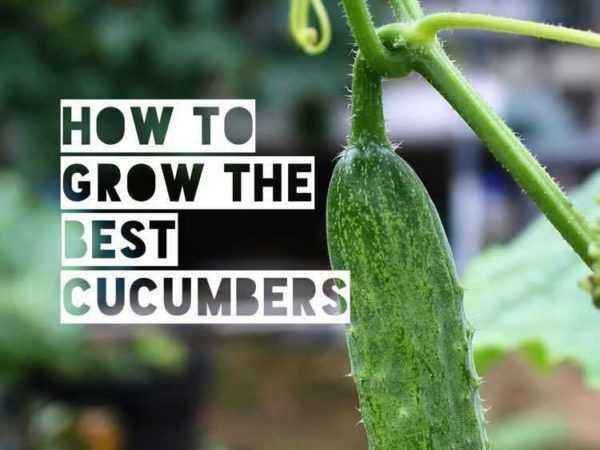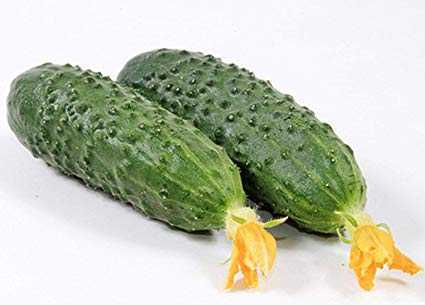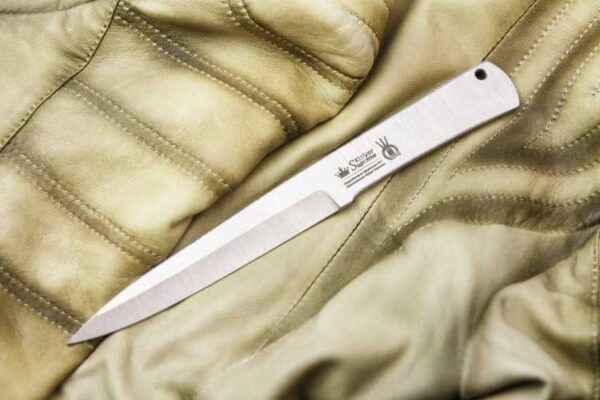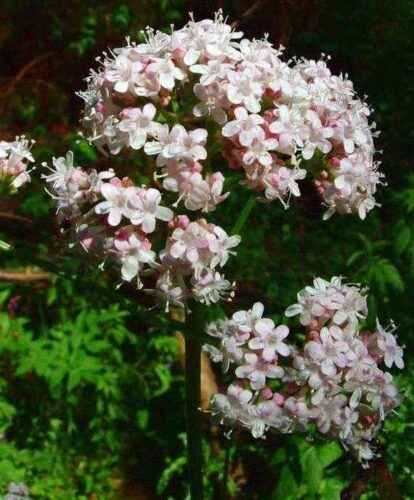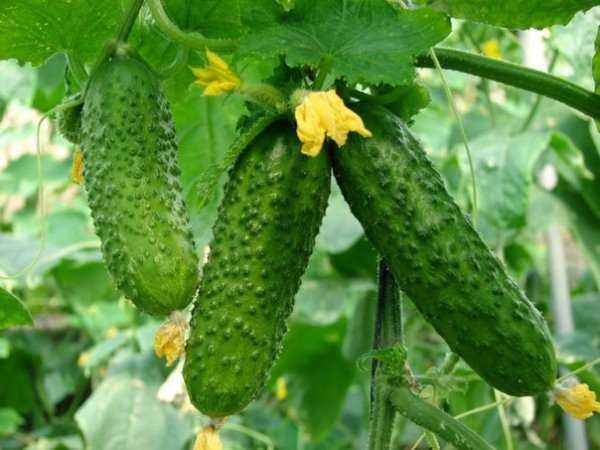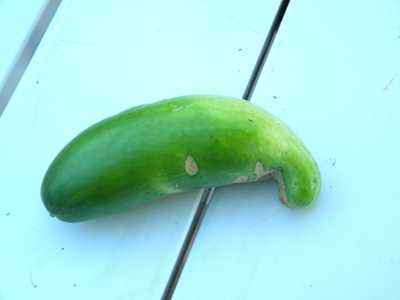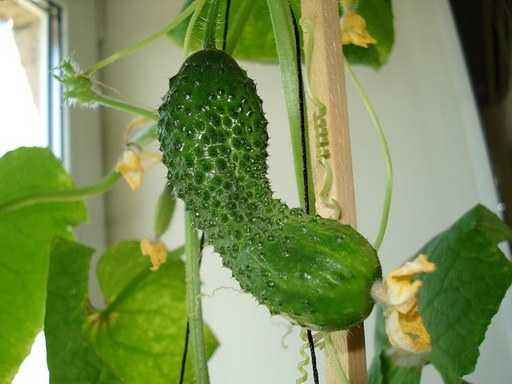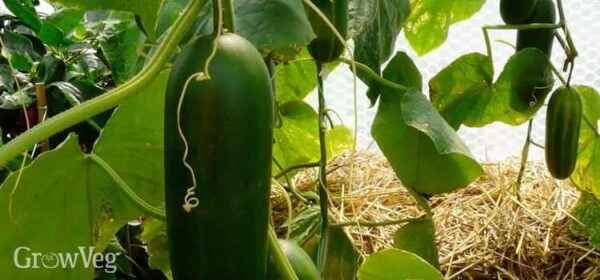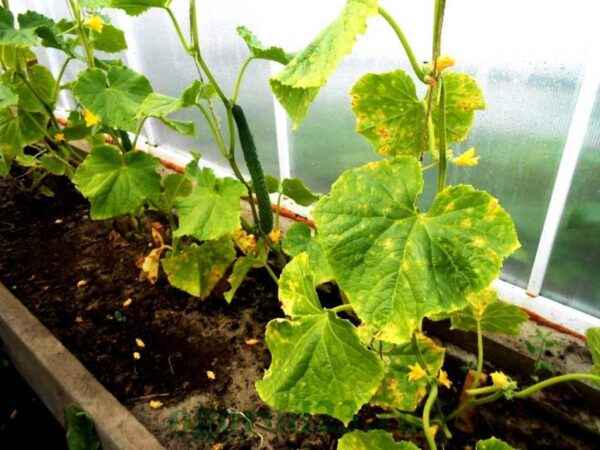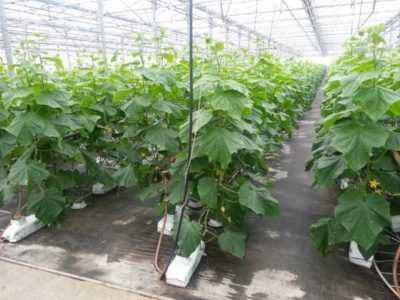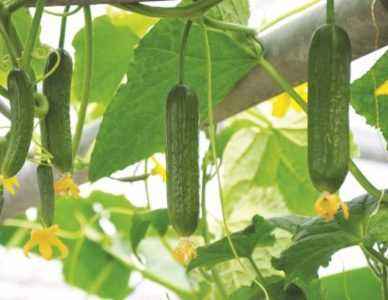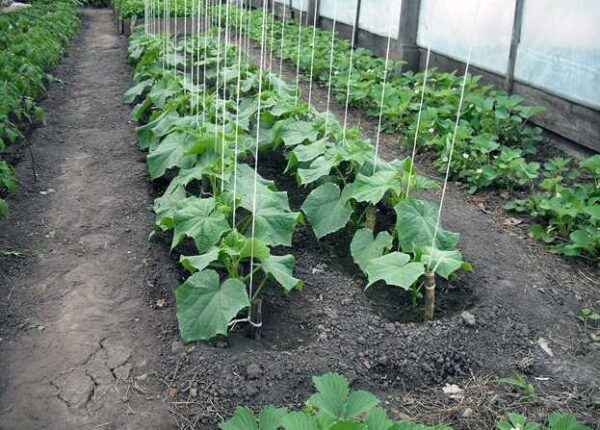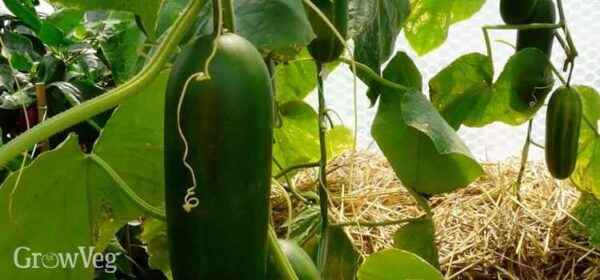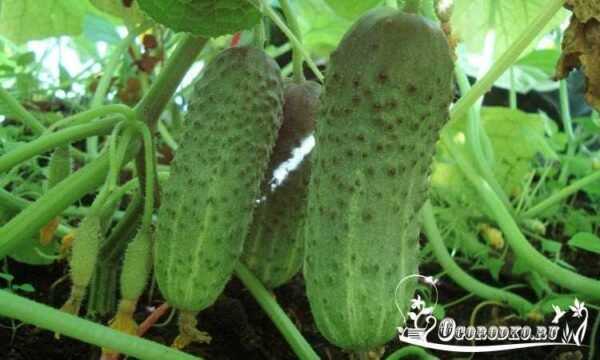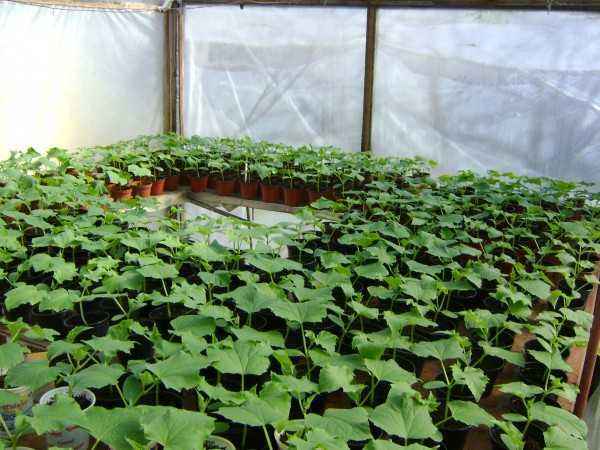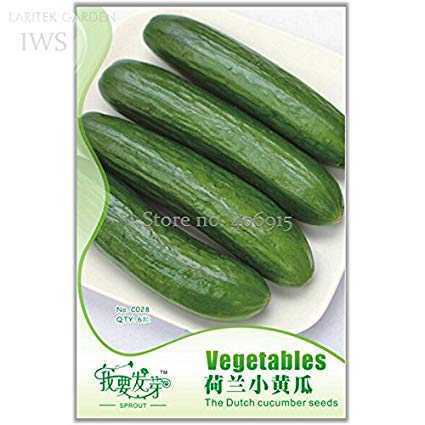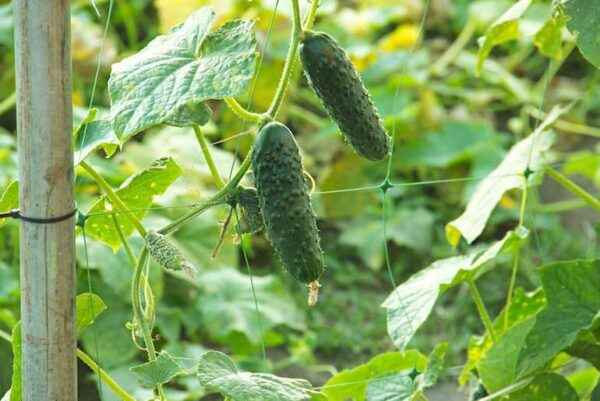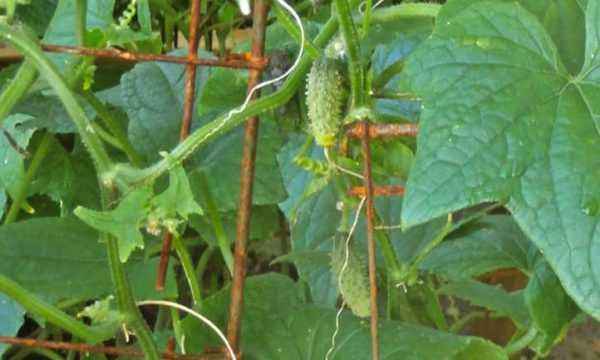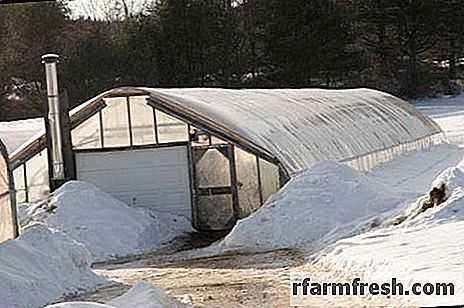Growing vegetables in the open ground, in a greenhouse or on the balcony, gardeners encounter various difficulties. Diseases can quickly destroy the entire seedlings or spoil the crop before harvesting. What are the most common diseases of cucumbers? We will analyze in detail the symptoms and treatment of ailments of a popular culture.
- Fungal diseases
- Phytophthiasis
- Powdery mildew
- Periosporosis <
- Black leg
- Stem rot
- Copper <
- Bacterial diseases
- Bacterial wilting
- Bacteriosis
- Wet rot
- Viral diseases
- Mosaic
- Jaundice <
- Treatment
- Fungi
- Bacteria
- Viruses
- Prevention
- Resistant seeds
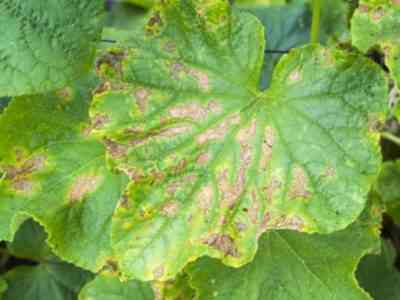
The most common cucumber diseases
Fungal diseases
To fungal diseases of cucumbers include a large number of infectious diseases.The causative agents are pathogenic fungi that develop well in the soil and parts of plants, and in the pulp of the fruit. An infectious disease spreads very quickly across the site, affecting healthy specimens.
Blight
The most common fungal disease that affects all cultivated plants. The spores of the pathogen are very tenacious and persist in the ground for a long time. The causes of the disease include errors in care, sudden changes in temperature and excessive humidity.For 14 days, the disease can completely destroy all plantings on the beds.
By what signs can you find out that cucumbers were infected with late blight? Dark spots on the leaves are the most characteristic symptom of the fungus. On the back of the plate, a white coating of mycelium is noticeable, which is easily blown off the surface. In the neglected state, the infection passes to the stems and green leaves, and the tops twist and fall.
Powdery mildew
A common disease that can destroy all plantings. Cucumbers are seriously ill, then it is very difficult to recover after treatment. Powdery mildew plants are easily infected with care errors, especially when they do not follow crop rotation rules and do not remove plant debris from the field.
Characteristic features are white plaque and rust on the leaves. Small spots gradually cover the plate to the edge, after which the greens turn yellow and wilt. If you do not start the fight against the disease in time, the culture stops in development and ceases to bear fruit. Cucumbers deform, become smaller, the flesh of the fruit becomes bitter.
Peronosporosis
This disease of cucumbers is often called downy mildew. A dangerous fungal disease affects plants at all stages of growth. The cause of peronosporosis can be both high humidity and watering with cold water. Farmers note that most often the pathogen appears in areas with thickened plantings and in case of non-observance of crop rotation rules.
Peronosporosis affects the foliage, covering the surface with yellowish-brown spots, which gradually grow throughout the plate with a purple bloom. With the development of the disease, the greens wrinkle, dry out and fall off. When grown in a greenhouse or in wet summers, the tops actively rot. If the treatment is not started in time, the crop will completely die.
The black leg
The pathogen penetrates the root tissues through cracks or small hairs, and also awaits its time in plant debris and contaminated soil. In addition, peat, manure or seeds from diseased “parents” become a source of infection. In indoor varieties, the peddler often has a dirty planting pot.
A sign of the black leg is a noticeable dark constriction on the stem. The diseased specimen acquires a muted green color, the lower section at the root becomes wet. Gradually, the plants turn yellow, wither and dry, and the disease passes to the neighbors. When the ambient temperature drops to 12 ° C, irrigation with cold water or a sharp change in weather conditions also provokes fungus.
Stem rot

Crop disease affects crop
Cucumber disease affects crop, so you need to carefully examine seedlings and adult plants, only in this way is it possible to protect the culture from wilting.Ascochitosis infects only weakened bushes and appears as round spots of greenish-brown color. The fungus affects not only the tops, but also the fruits (they rot, darken).
The causative agent does not live in the open ground, transmission occurs through the seeds. The ailment is activated with increasing humidity and sudden changes in temperature. Ascochitosis has long been viable on the walls of greenhouses and in plant debris.
Copper
Anthracnose is a common disease. With the advanced state of cucumber disease, leaves, stems and fruits are affected. First, yellow spots appear on the plates, which then turn brown and dry from the inside. Soon, the tissue crumbles, forming terrible ulcers. Zelentsy is deformed, bitter and rot during transport.
The disease progresses with increased humidity and temperature in the range from 23 ° C to 27 ° C. The spread of the fungus is facilitated by insect bites and infected tools. The maximum damage from anthracnose is done to greenhouses.
Bacterial diseases
The causative agents of this group of diseases are bacteria. According to the description, microorganisms penetrate the plant through damaged areas, and then spread through the vessels. They easily pass from one cucumber to another with infected tools or insect bites.
Bacterial wilt
A dangerous disease affects the ground parts of the plant.Foliage with bacterial wilting becomes stained, loses turgor and dries, while the stem remains green. Mucus accumulates inside the trunk, spreading the disease through the vessels, causing death and death.
If signs of a cucumber disease have manifested themselves, parasites – striped cucumber beetles – have wound up on the site. Through insect bites, pathogens quickly spread through plants. The disease does not linger in seeds, soil and plant debris.
Bacteriosis
The disease affects all the aerial parts of the cucumber. The foliage is covered with angular brown spots, after which the plate dies. The fruits are deformed, and the seed material quickly rots.
Bacteriosis is activated in conditions of high humidity and in the temperature range from 19 ° C to 24 ° C. Most often, the ailment occurs in greenhouses and during sprinkling, when small drops collect on the greenery. In the soil, the pathogen dies, and the seeds are the source of the spread.
Wet rot
A dangerous disease that can destroy more than 39% of the crop. In the early stages, the symptoms are almost invisible, so often the farmers miss the appearance of the disease. Affected plants are inferior in growth, discard foliage, and slight wilting is sometimes noted. Many buds are formed, but the fruits rarely develop or have a deformed shape.
Warm and humid air is a favorable condition for the spread of bacteria.The infection quickly spreads through the vessels, after which dark spots-necrosis appear on the tops. If you do not start treatment for cucumber disease or build a worthy defense against microorganisms, the liana withers and dies.
Viral diseases
These diseases are more dangerous compared to fungal and bacterial ailments. Cucumbers are affected both mechanically and by parasite transfer or when transplanted from other crops. To identify the causative agent, a series of laboratory tests are necessary.
Mosaic

The disease can destroy the entire crop
In greenhouse conditions, viral diseases of this type most often develop. Infection occurs both through the soil and from dirty equipment. The disease feels great in the ground at low temperatures, and is also easily tolerated by insects. There are 2 varieties of the dangerous disease of cucumbers.
- White. The most serious mosaic, quickly destroying the crop. Actively develops in heat above 25 ° C or temperature fluctuations. The characteristic signs of the disease appear in the form of yellow and white spots on the foliage.
- English. Light marks along the veins are accompanied by wrinkling of the plates. The more the mosaic captures the plant without protection, the more the fruits are deformed, acquiring a bright color.
Sometimes the seeds of a crop can be infected with the virus. Most often, such raw materials are not suitable for use. The mosaic pathogen is immune to chemicals and therefore does not respond to fungicidal treatment before sowing. To protect yourself, it is better to choose resistant varieties from trusted manufacturers.
Jaundice
Foliage color change is a common sign of many diseases. Among the viral diseases of cucumbers, jaundice is worth noting. Due to the loss of chlorophyll, the tops are very pale, becoming stiff and brittle.
The longer the farmer does not pay attention to the symptoms, the more the plant is destroyed. The culture stops developing, the buds are deformed. The virus completely affects the vascular system of the cucumber.
Treatment
The fight against disease should begin immediately. Diseases of cucumbers pass quickly and quickly, so novice farmers often lose valuable time. Due to weakened or missing plants, the yield of the variety is significantly reduced.
Fungi
Even the most resistant pathogens die under the influence of copper, therefore it is advised to spray the affected plantings with the HOM preparation . It is enough to dilute 20 g of powder in 5 liters of water, and then spray the bushes with a spray gun. By the way, the solution is enough to process a plot of 50 square meters. m.
To combat powdery mildew, ascochitosis or anthracnose, it is better to spray cucumbers with colloidal sulfur.The procedures are carried out in cloudy weather, they try to douse the foliage from all sides. A mild form of disease is treated with folk remedies. For example, a solution of baking soda with soap is allowed to sprinkle the plants once a week until the signs of peronosporosis or black rot disappear.
1 liter of sour milk is mixed with 1 liter of warm water. Filter the solution and spray them with plants once a week.
Bacteria
Microorganisms are difficult to destroy, so all activities begin after the onset of symptoms. The fight against pathogens is undertaken during the period of soaking seeds. In the early stages against bacteriosis and wet rot, spraying with a 1% solution of Bordeaux fluid helps.
Microorganisms do not like copper-containing preparations. From any disease of cucumbers, two procedures are performed using the “HOM” or “Kuproksat” means. Between sprinkling, an interval of 10 days is maintained, after which the actions are repeated. Folk methods are difficult to treat and fight infection, so do not experiment.
Viruses
If the cucumbers are sick with mosaic or jaundice, the disease has already passed the initial stage. In a neglected state, neither soil nor greenhouse cucumbers can cope with diseases. In the early stages, when the yellow color has not yet stained the foliage, a colloidal silver solution is treated. The drug has strong antiviral properties, so there is a chance of recovery.
- Othello;
- Pasadena;
- Semcross;
- Ophix.
If you know the enemy by sight, growing vegetables at home will not be difficult. Protection of cucumbers from diseases and prevention by various methods will protect them from treatment and rehabilitation.

